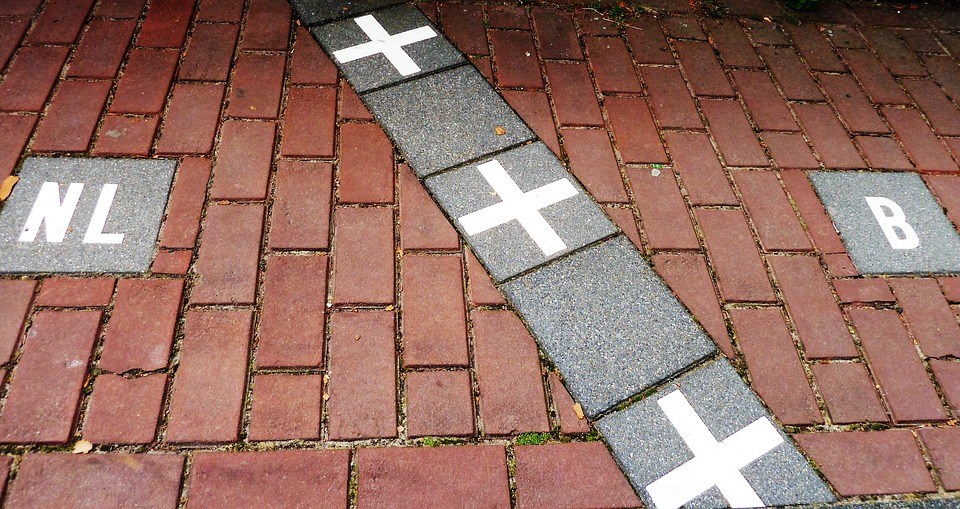Belgium lost 100 square metres of its territory to the Netherlands this week following a realignment of the border, which turned out to be historically inaccurate.
On Thursday, construction workers started removing the black and yellow bricks that mark the Belgian-Dutch border in the Belgian municipality of Essen, in the Antwerp province. Between the Grensstraat and the Nieuwstraat, the line will be moved 1.80 metres towards the south, downsizing Essen with 100 square metres. The works are set to finish by 1 September.
The correction does not mean that some Belgian citizens will now be living on Dutch territory, though the Essen municipal centre for social welfare is now partially located in the Netherlands.
The realignment was realised by the Dutch border municipality of Roosendaal, with knowledge of the Essen municipality.
The decision came following a survey by the Belgian-Dutch border commission, which showed that the border had not been maintained correctly since 1843.
Related News
- Coronavirus: Only half a store opens on Dutch/Belgian border
- Students aim to travel 400 km by kayak in Belgium
In Essen, in the 19th century, the Belgian-Dutch border crossed through a canal. The landmark demarcating the border then had to be placed on the northern quayside of the waterway, in the Netherlands. The canal was later drained and filled in, but the landmark was not moved further south to correctly align with the border.
Belgium and the Netherlands have a long and sometimes complicated history, as (parts of) Belgium used to be part of the earlier versions of the Netherlands. Between 1815 and 1830, the two countries were temporarily unified as the United Kingdom of the Netherlands. The current border was officiated in 1843 with the Treaty of Maastricht.
To this day, there still exists one Belgian municipality that is entirely surrounded by Dutch territory: Baarle-Nassau. The municipality is located in the Dutch province of Northern-Brabant, 4.5 km from Belgium, and has over 6,000 inhabitants. Its total size is 76.36 square kilometres.
In March of this year, the border in Baarle-Hertog led to a complicated situation as the different coronavirus regulations in both countries led to one store only half opening, as it was located squarely on the line.
Amée Zoutberg
The Brussels Times

